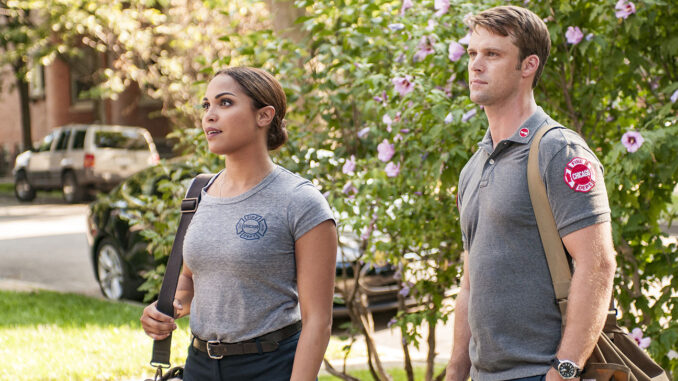
Behind the Flames: Secrets and Silhouettes of Chicago Fire
Chicago Fire, a sprawling, heart-pounding drama, has gripped audiences for over a decade, inviting them into the chaotic, heroic world of Firehouse 51. But the perfectly synchronized movements of firefighters charging into burning buildings, the emotionally charged dialogues, and the tight-knit camaraderie belie the intricate, often challenging, realities of filming a television show of this magnitude. Behind the scenes, a complex dance unfolds, revealing secrets of production, technical ingenuity, and the dynamic relationships that bind the cast together, both on and off screen.
One of the most significant secrets lies in the sheer scale of the production. Chicago Fire isn't just set dressing; it's a constant barrage of controlled chaos. The fires themselves, while meticulously planned and executed by special effects teams, are real. Massive gas lines are strategically placed within controlled environments, allowing for spectacular explosions and realistic infernos. The cast undergoes extensive training with real firefighters, learning how to handle hoses, axes, and even perform basic rescue techniques. This commitment to authenticity is evident in the visceral intensity of each scene. However, the reality is far more controlled than it appears. Firefighters stand just out of frame, monitoring the situation and ensuring the safety of the actors. Multiple cameras capture the action from different angles, creating the illusion of a single, continuous take. It’s a testament to the skill of the crew that this controlled environment translates into such raw and believable television.
Another fascinating secret resides in the post-production magic. While the actors perform bravely amidst the controlled burns, the real danger is often added later. Through skillful editing, sound design, and CGI, the fires are enhanced, making them even more terrifying and visually impactful. The sounds of crackling flames, collapsing debris, and desperate screams are meticulously crafted, contributing to the immersive experience. This careful orchestration blurs the line between reality and illusion, creating the captivating spectacle that draws viewers in week after week.
Beyond the technical aspects, the cast dynamics play a vital role in the show's enduring success. The actors, often working in physically demanding conditions and portraying deeply emotional storylines, have forged a genuine bond, mirroring the camaraderie they depict on screen. Stories abound of practical jokes on set, late-night dinners, and genuine support for each other during challenging scenes. These friendships, built on shared experiences and mutual respect, translate into authentic chemistry on screen.
However, even the most harmonious cast faces its challenges. The long hours, the emotional toll of portraying traumatic events, and the constant pressure to deliver can inevitably lead to friction. While the production strives to maintain a positive and supportive environment, creative differences and personality clashes are an inherent part of any collaborative endeavor. Maintaining a healthy balance between professionalism and camaraderie is crucial for the cast to navigate these challenges and continue to deliver compelling performances.
Furthermore, the casting itself is often a deliberate strategy to create specific on-screen dynamics. The contrasting personalities of Kelly Severide (Taylor Kinney) and Matthew Casey (Jesse Spencer), for instance, were intentionally designed to create a believable rivalry and eventual camaraderie. The casting directors meticulously sought actors who not only possessed the necessary talent but also the ability to embody these complex characters and convincingly portray their relationships. This attention to detail in the casting process has undoubtedly contributed to the show's success in portraying realistic and relatable characters.
In conclusion, the world behind the scenes of Chicago Fire is a complex tapestry woven with technical ingenuity, meticulous planning, and the undeniable chemistry of its cast. While the flames we see on screen may be enhanced with CGI and the camaraderie may be carefully cultivated, the dedication, passion, and genuine bonds between the cast and crew are undeniably real. It is this potent combination of realism and illusion, of orchestrated chaos and genuine connection, that allows Chicago Fire to ignite our imaginations and keep us coming back for more, revealing the hidden secrets that lie behind the captivating spectacle.
